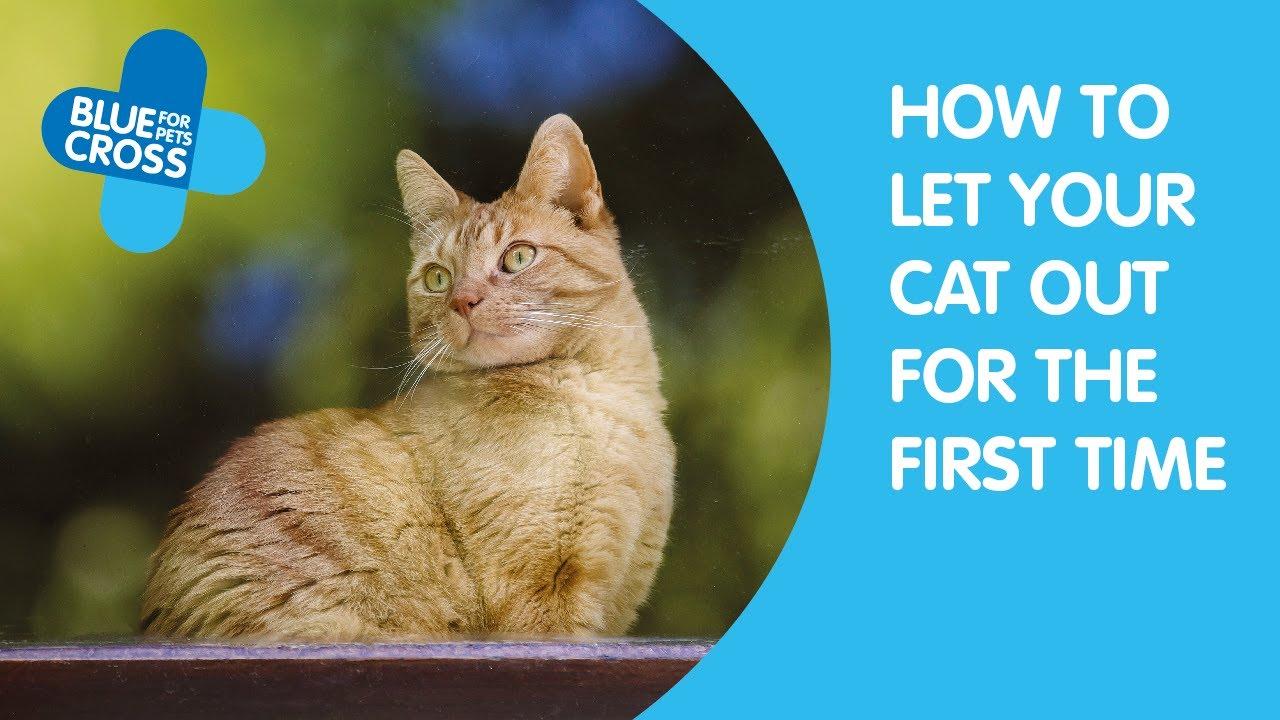
Letting your cat outside for the first time
Letting your cat out for the first time can be a scary experience and you may be wondering at what point you can set them free into the big wide world safely.
First thing’s first, before you let your cat outside you will need to get them:
We recommend getting your cat a quick-release collar that snaps open if it’s caught on something with an ID tag before they go adventuring outdoors. That way, if they get lost/go missing, someone will be able to contact you and reunite you with your cat.
When can I let my cat out?
Kittens need to be at least five months old before they go outside on their own. This gives them time to have all their vaccinations and they’ll be almost fully grown.
Adult cats will need at least two weeks to settle in so they have a chance to get used to their new surroundings. If your cat is nervous, then you might need to take things a little more slowly.
How to let your cat outside for the first time
If you’re at home all day, then you might choose to let your cat out throughout the day, otherwise, installing a cat flap will give your cat more freedom.
Before letting your cat outdoors:
- Work on their recall. Call their name in the home and reward them with a treat and a nice head scratch when they come to you.
- Cover any ponds in your garden
- Safe-proof your garden, removing harmful items
- Sprinkle some soiled litter around the perimeters of your garden which will help to establish their territory
Letting your cat out
The first time you let your cat outside, choose a quiet day when there are no loud noises and it’s dry, so your cat gets a positive first experience. You’ll also need to be around to supervise their first trip outside.
Step one: Before giving your cat breakfast, open the back door to allow them outside
Step two: When your cat does venture outside, let them explore at their own pace for around 30 minutes. Try to avoid picking them up as this can frighten them.
Step three: Call them back to you and put down their breakfast
Step four: Repeat this daily, gradually increasing their time outdoors until they’re happy with being outside on their own
Remember that cats are cautious by nature, so they’re not likely to just bolt out the door. Most will take their time and explore very slowly and carefully.
Let them explore in their own time and don’t panic if they hop over a fence, or go further than you feel comfortable, most cats come back after a few minutes, at which point you can give them a tasty treat to encourage their return.
How to train a cat to use a cat flap
Cats naturally want to explore outside, so will quickly work out the best way to do this. For most cats, simply taping or pegging the cat flap open will encourage them to use it. However, some cats struggle more than others to master the cat flap, especially those that are nervous.
Step one: Start by holding the cat flap open
Step two: Encourage your kitten or cat to the cat flap by holding a treat or wiggling their favourite toy in the cat flap opening
Step three: Reward your cat when they approach the opening of the cat flap and soon your cat will start to associate it with positive things
Step four: Once your cat is comfortable approaching the cat flap, you can begin coaxing them through it by encouraging them with a treat. Reward them for every step in the right direction, whether that’s poking their head through or popping a paw over the threshold.
Step five: When your cat goes through the cat flap for the first time, be sure to give them an extra special treat and lots of praise! Practice this from both sides of the cat flap.
Step six: As soon as your cat has got to grips with going through an open cat flap, you’ll need to teach them how to push themselves through a closed one. Some cats will understand how to do this intuitively. For others, you’ll need to guide them through with the use of toys or treats, and it can help to hold the cat flap slightly open for them, slowly lowering it each time they pass through.
Tip
While you’re training your cat, it will help to also teach them that the sound of the cat flap isn’t scary. Open and close the cat flap and, every time it closes and makes a noise, give your cat a treat so they associate the noise with something positive.

Donate today
We can’t provide pet advice without your support. Your donations allow our experts to create advice that is accurate and up to date. If you found this page useful, please help us to create more pet advice by donating.

Donate today
We can’t provide pet advice without your support. Your donations allow our experts to create advice that is accurate and up to date. If you found this page useful, please help us to create more pet advice by donating.





